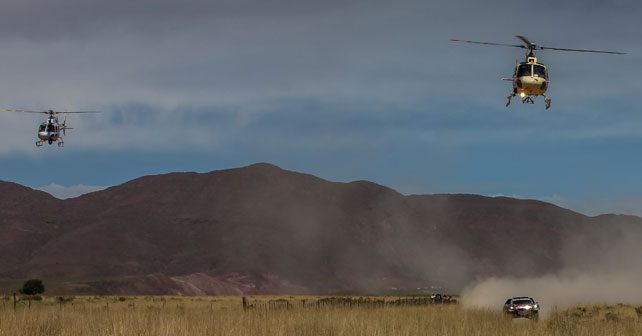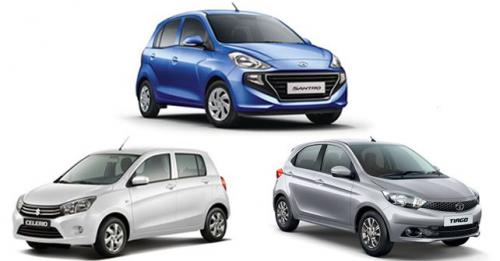Every year, a mighty contingent of vehicles and their pilots try to earn bragging rights at the craziest motorsport test there is. Peugeot’s return to the top headlined a hectic event.
On the muggy morning of January 2, the frenzied chaos in the Dakar pits at Technopolis in the suburbs of Argentina’s capital city of Buenos Aires had given way to restrained calm. As the drivers and riders trooped out of the briefing hall, the easy cheerfulness started to seep away. In its place they slowly slipped into a cocoon of isolation that people usually retreat to when confronted by a challenge that will push them way beyond the comfort zone. The start of the 2016 edition of the Dakar was just a few hours away. For 38 years now, the rally has created legends and destroyed reputations. Left men and women with broken bones, bruised egos and even lives have been lost in the quest for ultimate glory.
For 13 days, the gigantic caravan of bikes, quads, cars, trucks, mobile broadcast studios, assistance trucks, catering vehicles, life-saving ambulances and race control trucks raced across some of the most remote stretches of Argentina and Bolivia as part of the world’s toughest rally-raid. This year, unpredictable weather conditions unleashed by a vicious cycle of El Nino in the southern hemisphere posed additional challenge for the participants besides the mind-numbing length of the special sections and long transport sections that defines the Dakar.
In the Dakar, like in any other form of motorsports, the big teams with huge budgets and manpower, grab the eyeballs, but it’s the privateers, who make up for more than 80 per cent of the field, remain the heart and soul of the rally. Among these, there is still a smaller bunch of maniacs in the moto and quad classes, called Malle Moto, who take part in the endurance race without assistance. After a long hard day, battling the most brutal terrain that the Dakar throws at competitors, they service their own bikes and quads.
This year, going into the race, there were many questions that were playing on the minds of the people. Could Sebastian Loeb, the rallying legend with nine WRC titles, make his mark in the toughest race of life? Who will get the No 1 plate for next year’s Dakar in moto class following the retirement of the five-time winner, Marc Coma, earlier this year? Could the Hondas with the formidable Joan Barreda Bort and Paulo Goncalves in its ranks finally stop the KTM juggernaut in the absence of Coma? Were the Patronelli brothers still good enough in the quad class to dispel the threat posed by the defending champion, Ignacio Casale of Chile and past winner Rafal Sonik? And finally, can Gerard De Rooy and his band of Iveco truckies break the stranglehold of the Kamaz armada? Of course, from the Indian perspective, all eyes were on CS Santosh in the bright yellow colours of Suzuki and Sherco TVS.
As the Dakar started to unfold, some of the answers became clear sooner than expected. Following the cancellation of the first stage due to bad weather, the battle between KTM and Honda started in right earnest in the moto class. Without wasting much time, last year’s third place finisher, Toby Price, from Australia quickly established himself as the lead pilot for the KTM factory racing team. In the opposing Honda camp, Barreda unleashed his blinding pace. But Spanish rider’s callousness in the speed control zones (DZ-FZ) in the second and third stages cost him stage wins, handing the advantage to Price. But much worse was in store for him in the days ahead.
Like last year, when Bolivia turned out to be Barreda’s nemesis, this time too, the Honda’s reliability in the high-altitude loop of Uyuni-Uyuni that ran around the salt flats of the Salar de Uyuni failed the Spaniard. It left only Goncalves to challenge Price in the high-stake game. With Barreda out of contention, Price controlled the rest of the race brilliantly combining his supreme riding skills with canny reading of the situation. As the pressure mounted on the Honda team, Gocalves made some uncharacteristic riding errors, including a spectacular crash in ninth stage. Ultimately, like his team-mate, the CRF 450 Rally failed him in the 11th stage between La Roija- San Juan. It meant it was Price’s rally to lose. But the battle-scarred Australian was not the one to let go of the opportunity to get his name on the winners’ list. By the 11th stage he enjoyed a cushion of more than 24 minutes that allowed him to cruise to the top step of the podium.
In the cars, Loeb served notice instantly. The Frenchman behind the wheels of the monstrous 2008 DKR Peugeot won four consecutive stages straight away to emerge as the overall leader by the time the rally stopped for a rest day in Salta. The sheer pace of the Pugs, left the defending champion, Nasser Al Attiyah, piloting the Mini No. 300 gasping for breath. “The Peugeots are just too fast and I have tried my best to match their pace,” was his verdict after the fourth stage.
Loeb’s performance till that point won his share of admirers and sceptics alike. Old Dakar hands among the press crop were quick to point out that the real test lay ahead since the first half of this edition of the Dakar didn’t put too much premium on navigation. It turned out to be prophetic.
On the eighth stage that involved dune crossing and off-piste driving for the first time placing a heavy premium on navigation, the Frenchman crashed heavily after hitting a hole on the ground, that put him out of contention for Dakar title on debut. With Loeb out, it seems Ari Vatanen’s record of winning the Dakar on the first attempt will remain intact for a bit longer. With Loeb out of the picture, Stephan ‘Mr. Dakar’ Peterhansel, and Carlos Sainz, took charge of Peugeot’s fortunes. But on the 11th stage, luck ran out for Sainz following an engine failure. It left Peterhansel with a cushion of more than 24 minutes in the last few stages as he raced towards his 12th Dakar title. Behind the French marque, Attiyah fought on manly taking wins on the eighth and eleventh stages in his Mini Countryman. For most of the race, past Dakar winner, Ginel De Villiers, who has been shepherding Toyota in the Dakar since Volkswagen quit the rally, flew well below the radar. Despite no stage wins, De Villiers brought home his Toyota Hi Lux in third place. “We are very happy with what we have achieved in this Dakar. We didn’t have the pace to match the Peugeots and the Minis. So we need to come back stronger for the next Dakar,” said the genial South African at the finish of the last stage.
In the quads, as expected the Patronelli brothers remained in control after the first few stages. With no competition under their belts before the Dakar, they took a bit of time to slot themselves in the groove. Between the two, they won eight of the 13 stages to wipe away any competition, but it was Marcos with six best stage times emerged as the winner ahead of Alejandro. Among the trucks, Gerard De Rooy with six straight stage victories in the second part of the rally demolished the monopoly of Kamaz. For the first time in many years, the Kamaz trucks couldn’t match the pace of the Ivecos, though last year’s winner, Airat Mardeev managed to salvage second place ahead of Fedrico Villagra in another Team De Rooy Iveco.





































Write your Comment